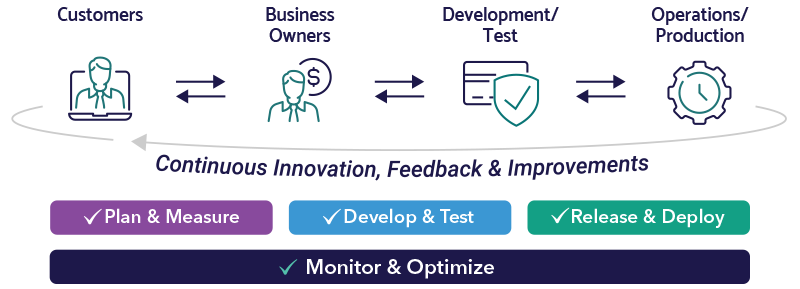Innovation is the present and the future. A competitive marketplace constantly develops better, faster, and more efficient technology and ingenuity, keeping pace with global demands. For a real-world example: data-storing devices went from big, bulky hard disks to portable USB drives, to ultimately no device at all – with cloud-based technology the preferred storage method. This transformation was made possible through the product engineering process.
What is Product Engineering?
The cycle of product ideation, creation, functionality testing, supervision, and maintenance of any software product is called product engineering. Product design, adaptation, and management are the basics of any commercial production process. The product engineering lifecycle is a rigorous process that ensures all strategies are developed and implemented in order to meet specified objectives.
Supporting full lifecycle management – design, build, quality assurance, deployment, and maintenance – is crucial. Additionally, establishing processes with automation and reusability with advanced competencies in system integration, open-source technologies, and cloud modernization are important to the product engineering process as technology continually advances.
The bottom line is simple: effective product engineering can work wonders. It’s extremely crucial to partner with the right team to bring out the best of your brand.
Why Product Engineering?
Product engineering brings form, functionality, and necessary elements to the software goals and online presence of any business. It can be incredibly challenging to execute a software-based solution without the right assistance that meets your business needs. Businesses flourish when a tailored solution is implemented rather than a generic solution – something that’s unfortunately common in saturated markets.
Here’s why your business needs product engineering:
- Product engineering helps collect and calculate the resourcefulness of any idea. It narrows down the needs of your business and creates specific goals for your product or service to achieve. It will also assess risks and liabilities before and during the process.
- All businesses rely heavily on software solutions for operational efficiency and documentation purposes. Good technology-backed businesses can shift attention to other important aspects like marketing, sourcing businesses, implementing and achieving business strategies versus the process itself – immensely saving time and resources.
- The cycle of product engineering goes through the phases of design, develop and deploy. Simultaneously, a continuous quality layer ensures that the quality of the product meets acceptable standards. The software product is then deployed on the target environment and is ready for use by users.
One key element of the phases which is often neglected is upkeep/maintenance. Once the product has been deployed and is in use, it must be monitored and maintained. This involves both mundane tasks (like backing up the data regularly) and more critical and involved tasks (like keeping security rules up to date).
BUSINESS BENEFITS
![]() Faster delivery of features
Faster delivery of features
![]() More stable operating environments
More stable operating environments
![]() High productivity
High productivity
TECHNICAL BENEFITS
![]() Continuous software delivery
Continuous software delivery
![]() Less complex problems to fix
Less complex problems to fix
![]() Faster resolution of problems
Faster resolution of problems
Product engineering is pillar of true growth. With the right plan and team in place, you’re able boost your business performance through quality service and support.
Count on the skilled and dependable experts at Prakat to deliver the ideal solution for your business requirements. Contact us today for more information!
Connect with Prakat.
![]()
Modernize and transform how you do business in the digital age. The Prakat team is ready to help you get started.








